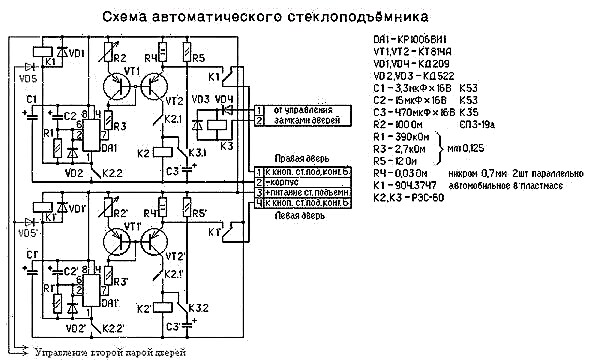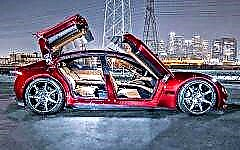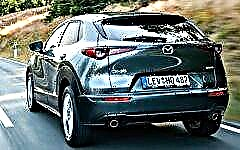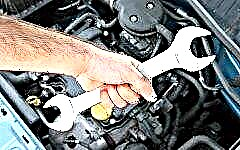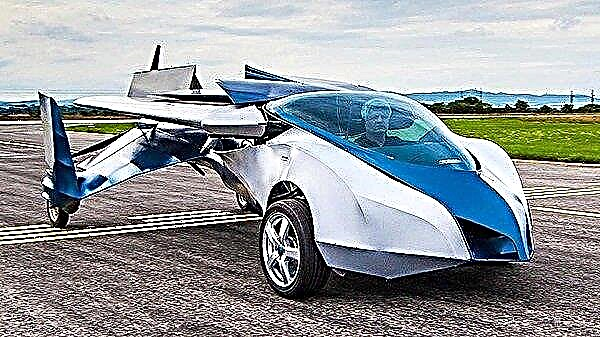
The content of the article:
- How long have flying cars appeared?
- Flying cars of our days
- AeroMobil
- Aircraft TF-X
- Why we still don't fly our cars
Humanity has always dreamed of flying. More than a hundred years ago, it created airplanes, then airplanes and helicopters appeared. However, these vehicles were very expensive (and still are), and the average person could not afford them.
But people have another dream that has not yet come true en masse. It's about flying cars. They can be seen in science fiction films, different prototypes periodically appear, but there is still no mass production. Why is this happening? What is the difficulty in creating flying cars? Will anyone be able to fly their own car in the near future? Or is this dream destined to remain a dream? Let's figure it out!
Flying cars are almost a hundred years old

Don't be surprised, it's true! The world's first flying car can rightfully be called the autoplane of aeronautical engineer Glen Curtis. He created it in 1917 from his own plane and a Ford car. This aeromobile was equipped with 3 rows of 12 meters of fenders and a 100 hp engine. It was planned that this three-seater car will move with the help of a propeller, which was installed in the rear.
However, this car never really took off, it just bounced off the ground. Therefore, the project was abandoned.
But the very idea of creating a flying car remained and was picked up by other inventors. Although sometimes the trials ended tragically.
In the 20s of the last century, Henry Ford himself became interested in the idea of creating a flying car. He created a small flying car "Flying Flivver", but during testing the car crashed along with the pilot, who was a close friend of Ford. Therefore, the auto designer abandoned his idea.
The first successful tests of a flying car were carried out in 1937. The designer Waldo Waterman created the "Arrow", which resembled a two-seater three-wheeled motorcycle with wings. He could accelerate to 110 km / h on the ground and fly at a speed of 200 km / h. Moreover, the wings could be rented and attached to a car at airfields. Only six of these were produced, but then the Studebaker company, which financed the project, curtailed it, citing huge costs.
In 1940, the Convair company developed the "ConvAirCar" flying car project (a two-door sedan to which the aircraft part was attached). On tests, this aeromobile flew for an hour. The developer was about to sell the car, but the third flight was tragic, which buried the project.
In 1946, the inventor R. Fulton created Aerofibia. Before him, all designers tried to adapt the car to the sky, but he also decided to adapt the plane to the road. The wings of the aircraft were removable, and the propeller easily folded inside the fuselage.
Aerofibia is the world's first flying car to be certified by the United States Civil Aviation Administration. It would seem that this is a success, but Fulton could not bring his brainchild to mass production - he simply did not find enough funds.
In 1949, Malt Taylor created the Aerocar. It passed successful tests, however, for various reasons, it never entered mass production.
After that, many inventors tried to create flying cars, but they did not go beyond projects. Nobody dared to serial production of such cars.
Modern flying cars
Naturally, technology has made great strides in the 21st century. Therefore, it would seem that humanity should have already solved the problem of traffic jams and moved through the air. However, this still remains a dream. AeroMobil from Slovakia and Terrafugia, a Boston-based developer, have come closest to realizing this dream.
AeroMobil

AeroMobil has been developing flying cars since 1990. A number of successful tests have been carried out on their prototype. The developers say that as early as 2017 they can release the cars into mass production.
AeroMobil is a flying car that can take a standard parking space without any problems, uses regular gasoline and can drive on highways. Moreover, this car can fly using any airport in the world. To take off, this car needs 200 meters of flat road surface. For landing, 50 meters is enough. If there is no track nearby, AeroMobil can land on any piece of land (as long as it is level). AeroMobil caught the attention of NASA.
The company hopes that AeroMobil 3.0 will go into production. The skeleton of a flying car is made of composite materials and steel. The airmobile is stuffed with modern technology (autopilot, GPS navigation, rescue parachutes, a system for night flights).
The transformation process from a car to an airplane takes a maximum of 20 seconds. Now the development team is fixing all the problems that were identified during the tests.
People with a regular driving license (for driving on the ground) and a sports or private pilot's license will be able to drive a flying car.
The cost of such an air car is not yet known, however, according to preliminary data, AeroMobil will have to pay 300 thousand euros.
Aircraft TF-X

Boston-based Terrafugia has created the TF-X prototype aircraft that is road and runway independent.
The four-seat TF-X does not need a runway as it takes off vertically. The fenders can be folded, so the car can easily fit into a regular garage.
The hybrid is equipped with a 300-horsepower gasoline engine and two electric motors. A tunnel fan is installed in the tail, with the help of which air draft is provided. There are propellers on the wings.
The developers assure that the TF-X will be able to travel up to 1000 kilometers by air in just three hours. At the same time, Terrafugia pays great attention to transport safety. The developers believe that flying in their air car should be much safer than driving a regular car. The whole process of learning to drive a flying car will take only 5 hours.
The TF-X will have autopilot, although the driver will be able to control the flight himself. It will also land automatically. In the event of an engine failure, the developers have created a huge parachute that allows the car to land safely.
TF-X will appear in series production no earlier than 2025. The cost of such an air car has not yet been disclosed. But according to employees of the company Terrafugia, TF-X will cost no less than a modern supercar.
AeroMobil and TF-X are two of the most realistic flying car projects that may see the light of day.
It should be noted that other companies are also actively working in this direction. For example, Google co-founder Larry Page has invested $ 100 million in a startup that creates flying cars with electric motors that can take off and land vertically. These cars are reminiscent of "grown" quadcopters. They have 8 engines on different sides and small fenders.
It should be noted that this is not a project of the Internet giant. Larry Page finances it himself. Moreover, he said that the results will be presented in the near future.
Why people still don't fly their cars

Development has been going on for 100 years, but the process has not actually moved off the ground.Various companies periodically show off their prototypes, but there is still no mass production. Why is this happening? What are the problems? Will flying cars be a reality in the near future?
Optimists from the development companies assure that soon anyone will be able to purchase an air car. However, many experts are convinced that people will never be able to fly in cars in droves. And they give quite literate reasons.
There are many complex technological, design and legal issues that need to be addressed for the ubiquity of airborne vehicles. We are talking about the cost of such cars, flight paths, flight adjustment process, safety, fuel consumption. Also, do not forget about the possibility of using aeromobiles by terrorists, training of air guides, parking difficulties, noise level, interaction with standard cars. So far, no prototype allows a person to move around with ease. But this is precisely what it is created for.
Basically, there are two main reasons why a person does not see flying cars over his head. These are economics and security. And now in more detail.
The flying car is a hybrid of an auto and an airplane. It is desirable that it take off and land vertically, since there are no runways in ordinary cities. Nobody will build them on purpose. If there were such lanes, it would be easier for people to use ultralight aircraft.
Of course, you can use the air car in the city as a car, and outside the village, where there are runways, as an airplane. However, in this case, it is easier to keep a full-fledged small plane at the airfield, and to get to it by a regular car. It is not profitable to carry wings in the city, and tires in the sky. Therefore, the only reasonable option is a car that takes off vertically.
For half a century, there have been vertically taking off aircraft (VTOL) that can take off and land on small areas of the surface. Such aircraft were predicted to be successful, but their operation revealed serious shortcomings.
Vertical take-off and landing are quite energy-intensive. To overcome the shackles of gravity, a quarter of an airplane's fuel is consumed. The plane has not yet flown, but has already spent a quarter of its fuel supply. Thus, it will be able to fly less than a regular plane. Vertical take-off and landing is a very complex process that requires high qualifications from the pilot. Its preparation costs a lot of money. During takeoff and landing, planes often stumbled sideways and the lift motor failed, which led to serious accidents.
In short, it turned out to be unsafe and expensive. Therefore, the idea of creating a VTOL aircraft was abandoned.
Failure with such aircraft actually puts an end to air vehicles, since there are serious shortcomings:
- The huge fuel consumption for takeoff and landing makes the entire flight uneconomical. Especially if you need to fly close.
- If the engine fails in the air or a collision occurs, then not only the pilots will suffer, but also the people and buildings below.
- Preparing a pilot for an air car is an expensive and time-consuming process, as there are many obstacles in modern cities.
- Metropolitan areas do not have the right infrastructure for air vehicles, and metropolitan areas are costly to rebuild.
- The construction and repair of highways is a billion dollar business. If all cars fly, businessmen will lose profits. It is unlikely that the world companies involved in the construction and repair of roads will allow flying cars to become a mass phenomenon.
The only plus of flying cars is high speed. However, in cities, cars usually do not travel at their maximum speed. Just overclocked, it is already necessary to slow down. But sometimes that speed is extremely important. We are talking about the delivery of the sick, the pursuit of criminals, the movement of VIPs. Although conventional helicopters are still coping with these tasks.
Thus, the issues of economics and security clearly indicate that humanity should not expect mass flying cars in the near future.
A person needs to dream. Without this, he will cease to be a human being. Flying cars are still just a dream, although, probably, everyone would like to fly over the city in their own car at least once!

